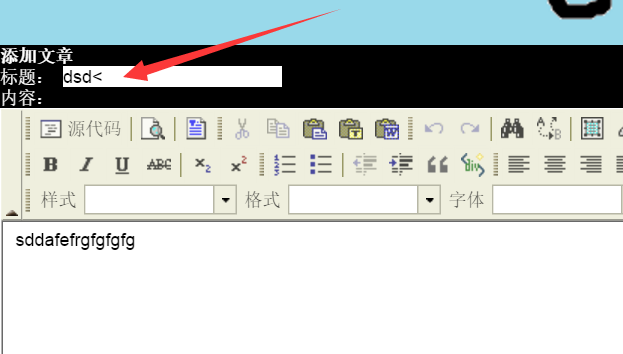java自定义注解实现前后台参数校验
2016.07.26
首先介绍些基本概念:
Annotations(also known as metadata)provide a formalized way to add information to your code so that you can easily use that data at some later point.
Annotations are partly motivated by a general trend toward combining metadata with source-code files,instead of keeping it in external documents. They are also a response to feature pressure from other languages like C#.
Annotations are one of the fundamental language changes introduced in Java SE5. They provide information that you need to fully describe your program, but that cannot be expressed in Java.Thus,annotations allow you to store extra information about your program in a format that is tested and verified by the compiler.Annotations can be used to generate descriptor files or even new class definitions and help ease the burden of writing "boilerplate" code.Using annotations,you can keep this metadata in the Java source code,and have the advantage of cleaner looking code,compile-time type checking and the annotation API to help build processing tools for your annotations.
---《Thinking in java》
1.java用@interface xx{}定义一个注解。
2.There are currently only three standard annotations(described earlier)(@Override @Deprecated @SuppressWarnings)and four meta-annotations defined in the Java language(@Target @Retention @Documented @Inherited):
@Retention(RetentionPolicy.SOURCE) // 注解仅存在于源码中,在class字节码文件中不包含
@Retention(RetentionPolicy.CLASS) // 默认的保留策略,注解会在class字节码文件中存在,但运行时无法获得
@Retention(RetentionPolicy.RUNTIME) // 注解会在class字节码文件中存在,在运行时可以通过反射获取到
(RUNTIME的值得注意下,因为意味着可以反射来获取)
@Target(ElementType.TYPE) // 接口、类、枚举、注解
@Target(ElementType.FIELD) // 字段、枚举的常量
@Target(ElementType.METHOD) // 方法
@Target(ElementType.PARAMETER) // 方法参数
@Target(ElementType.CONSTRUCTOR) // 构造函数
@Target(ElementType.LOCAL_VARIABLE) // 局部变量
@Target(ElementType.ANNOTATION_TYPE) // 注解
@Target(ElementType.PACKAGE) // 包
有一种做法就是在定义注解时加上@Taget(xx)和@Retention(RetentionPolicy.RUNTIME) ,但没有在注解中写方法,只是在运行时通过反射机制来获取注解,然后自己写相应逻辑(所谓注解解析器)
大概是类似的写法:
import java.lang.annotation.Documented;
import java.lang.annotation.ElementType;
import java.lang.annotation.Inherited;
import java.lang.annotation.Retention;
import java.lang.annotation.RetentionPolicy;
import java.lang.annotation.Target; @Documented
@Inherited
@Target({ ElementType.FIELD, ElementType.METHOD })
@Retention(RetentionPolicy.RUNTIME)
public @interface Validate
{
public int min() default 1; public int max() default 10; public boolean isNotNull() default true;
}
之后运行时,用反射获取注解,具体不谈。
之前在网上查找这方面技术文章找到的都是这种,给当时的我带来很大困惑。觉得不是我想要的。
关于Java 注解,在《java编程思想》一书里第十章有详细的介绍(包括@Retention(RetentionPolicy.RUNTIME)的方式,的注解处理器的例子),具体不多谈。
其实是可以通过@Constraint来限定自定义注解的方法。
@Constraint(validatedBy = xxxx.class)
下面是我做的 java自定义注解实现前后台参数校验 的代码示例:
package sonn.sonnannotation; import java.lang.annotation.Documented;
import java.lang.annotation.ElementType;
import java.lang.annotation.Retention;
import java.lang.annotation.RetentionPolicy;
import java.lang.annotation.Target; import javax.validation.Constraint;
import javax.validation.ConstraintValidator;
import javax.validation.ConstraintValidatorContext;
import javax.validation.Payload; import sonn.util.StringUtill; /**
* @ClassName: IsValidString
* @Description: 自定义注解实现前后台参数校验,判断是否包含非法字符
* @author 无名
* @date 2016-7-25 下午8:22:58
* @version 1.0
*/
@Target({ElementType.FIELD, ElementType.METHOD})
@Retention(RetentionPolicy.RUNTIME)
@Constraint(validatedBy = IsValidString.ValidStringChecker.class)
@Documented
public @interface IsValidString
{
String message() default "The string is invalid."; Class<?>[] groups() default {}; Class<? extends Payload>[] payload() default{}; class ValidStringChecker implements ConstraintValidator<IsValidString,String>
{ @Override
public void initialize(IsValidString arg0)
{
} @Override
public boolean isValid(String strValue, ConstraintValidatorContext context)
{
if(StringUtill.isStringEmpty(strValue))
{
return true;
}
if(strValue.contains("<"))
{
return false;
}
return true;
} }
}
上述代码,通过@Constraint(validatedBy = IsValidString.ValidStringChecker.class)限定了注解的方法逻辑---该注解类的名为ValidStringChecker的内部类。
而该内部类实现了ConstraintValidator<IsValidString,String>接口
官方文档是这样描述的:
Interface ConstraintValidator<A extends Annotation,T>
public interface ConstraintValidator<A extends Annotation,T>
Defines the logic to validate a given constraintAfor a given object typeT.Implementations must comply to the following restriction:
Tmust resolve to a non parameterized type- or generic parameters of
Tmust be unbounded wildcard types
The annotation
SupportedValidationTargetcan be put on aConstraintValidatorimplementation to mark it as supporting cross-parameter constraints. Check outSupportedValidationTargetandConstraintfor more information.
实现的isValid方法便是,该接口的校验方法。
试验一下效果,在要校验的实体类字段加上注解:

写文章页面,文章标题内加入'<'然后提交:

提交失败,报500错误,说明注解生效:

但这样还有问题,我的blog网站不能直接打印出报错信息。还是要搞一个error页面出来。
这个简单,web.xml下加入error页面路径,然后做一个页面即可:
<error-page>
<error-code>500</error-code>
<location>/error.jsp</location>
</error-page>
参考文章:
http://www.cnblogs.com/liangweiping/p/3837332.html
java自定义注解实现前后台参数校验的更多相关文章
- Java自定义注解源码+原理解释(使用Java自定义注解校验bean传入参数合法性)
Java自定义注解源码+原理解释(使用Java自定义注解校验bean传入参数合法性) 前言:由于前段时间忙于写接口,在接口中需要做很多的参数校验,本着简洁.高效的原则,便写了这个小工具供自己使用(内容 ...
- java自定义注解类
一.前言 今天阅读帆哥代码的时候,看到了之前没有见过的新东西, 比如java自定义注解类,如何获取注解,如何反射内部类,this$0是什么意思? 于是乎,学习并整理了一下. 二.代码示例 import ...
- java自定义注解注解方法、类、属性等等【转】
http://anole1982.iteye.com/blog/1450421 http://www.open-open.com/doc/view/51fe76de67214563b20b385320 ...
- java自定义注解知识实例及SSH框架下,拦截器中无法获得java注解属性值的问题
一.java自定义注解相关知识 注解这东西是java语言本身就带有的功能特点,于struts,hibernate,spring这三个框架无关.使用得当特别方便.基于注解的xml文件配置方式也受到人们的 ...
- Java自定义注解和运行时靠反射获取注解
转载:http://blog.csdn.net/bao19901210/article/details/17201173/ java自定义注解 Java注解是附加在代码中的一些元信息,用于一些工具在编 ...
- Java自定义注解的实现
Java自定义注解的实现,总共三步(eg.@RandomlyThrowsException): 1.首先编写一个自定义注解@RandomlyThrowsException package com.gi ...
- JAVA自定义注解 ------ Annotation
日常开发工作中,合理的使用注解,可以简化代码编写以及使代码结构更加简单,下面记录下,JAVA自定义注解的开发过程. 定义注解声明类. 编写注解处理器(主要起作用部分). 使用注解. 相关知识点介绍, ...
- SpringBoot Validation参数校验 详解自定义注解规则和分组校验
前言 Hibernate Validator 是 Bean Validation 的参考实现 .Hibernate Validator 提供了 JSR 303 规范中所有内置 constraint 的 ...
- Java 自定义注解 校验指定字段对应数据库内容重复
一.前言 在项目中,某些情景下我们需要验证编码是否重复,账号是否重复,身份证号是否重复等... 而像验证这类代码如下: 那么有没有办法可以解决这类似的重复代码量呢? 我们可以通过自定义注解校验的方式去 ...
随机推荐
- SVN使用总结
## 常用命令 建立分支 --- svn copy/cp svn cp http://example.com/repos/myproject/trunk http://example.com/repo ...
- pip 国内源 gem 国内源
清华: https://pypi.tuna.tsinghua.edu.cn/simple 豆瓣: http://pypi.douban.com/simple/ 阿里: http://mirrors.a ...
- linux下配置nginx使用service nginx start 服务
解压出来后执行 mkdir /var/tmp/nginx/client/ -pv 接下来我们简单的为它提供一个服务脚本吧! # vim /etc/init.d/nginx 新建文件/etc/rc.d ...
- tsql 执行存储过程
https://msdn.microsoft.com/zh-sg/library/ms189915.aspx https://msdn.microsoft.com/en-us/library/ms18 ...
- windows环境下修改Mysql的root密码
最近一直没用Mysql,root密码给忘了,然后就自己修改了一下,现在整理一下步骤.(我的版本是5.1) 启动MySQL服务:>>net start mysql 关闭MySQL服务:> ...
- javascript基础知识-数组
1.javascript创建数组时无需声明数组大小或者在数组大小变化时重新分配 2.javascript数组是无类型的 3.数组元素不一定要连续 4.针对稀疏数组,length比所有元素的索引都要大 ...
- 关于 某编译错误: This function or variable may be unsafe. Consider using strcat_s instead. To disable deprecation, use _CRT_SECURE_NO_WARNINGS.
每次当八月在VS2013里使用strcat的时候,基本上都会出现这个问题╮(╯▽╰)╭ 原因貌似是因为安全问题(⊙o⊙) 于是,解决方法如下: ①更改预处理定义: (这也是八月最常用的方法了,虽然貌似 ...
- Android多线程
final Handler handler = new Handler() { public void handleMessage(Message msg) { switch (msg.what) { ...
- 带回调函数的js运动框架
function startMove(obj, json, endFun) { //开始前关闭之前obj上的定时器 clearInterval(obj.timer); //定时器 obj.timer ...
- 企业搜索引擎开发之连接器connector(二十九)
在哪里调用监控器管理对象snapshotRepositoryMonitorManager的start方法及stop方法,然后又在哪里调用CheckpointAndChangeQueue对象的resum ...
